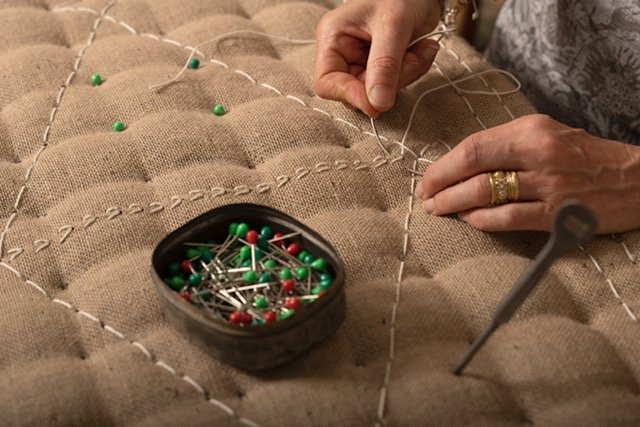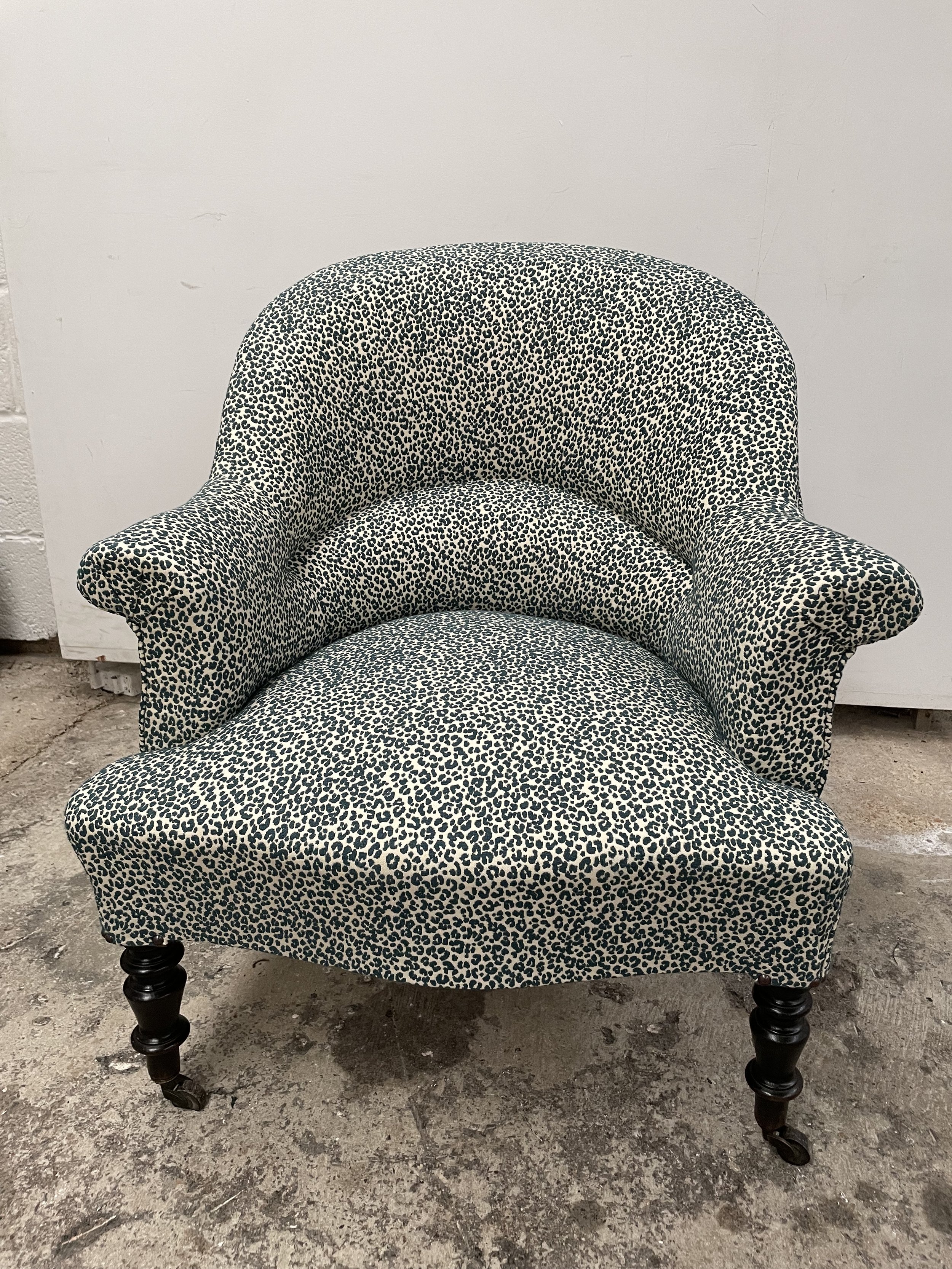Katerina Gibb
Katerina Gibb upholsters decorative and fine furniture by hand, using traditional techniques: hand stretched webbing, hand tied springs and hand stitched seats. She uses traditional tools and natural materials: jute webbing, horsehair stuffing, hessian, linen twine and unbleached calico.
Katerina works to commission, restoring well-loved upholstered pieces to their original condition. She also runs upholstery classes where traditional techniques are taught in a relaxed and friendly environment.
email katerina@theupholsteress.com
website theupholsteress.com
Resident Interview
Katerina Gibb, Studio 3
How long have you been a resident at VWS? Since 2014
When did you decide that you wanted to be an artist or maker?
After studying for a degree in Art History, my original career was in the film industry. However, I’ve always loved making things and sewing is in my genes. My mother, an exceptional couturier, designed and made wedding dresses and trousseaus for Kenya's settlers. However, this heritage goes back much further. My maternal great, great grandmother made exquisite hats under the label ‘Madame Louise’ in London’s West End. Two generations later, my grandmother took ‘Madame Louise Ltd’ to Nairobi and after recruiting a group of talented Italian tailors, who were prisoners of war at the time, she set up a furriers. She also created the most beautiful tapestries and embroideries from her own wools and silks, hand-dyed on her farm in Africa. My Grandmother was incredibly industrious; she would farm in the day, sheer the sheep and still manage to make everything from scratch in the remaining time she had available. It was about 16 years ago, when I had young children, that I found upholstery - my own form of stitching.
What’s your work routine if you have one? What does a day in the life of studio 3 look like?
I try to get here before 9 and work until 6 each day. On Wednesdays I also teach a class here. I don’t have a typical day as such, it very much depends on the project I am working on, but there is always something new to discover.
Briefly describe your creative process.
Everything is done by hand following traditional methods to restore and rework period and decorative furniture. I always conserve any original upholstery where sound and intact, but the process often involves stripping the piece entirely down to its frame. During this stage, it’s important to read the frame; you can tell a certain amount from the original tack holes. Often, I do the back of the chair and arms before the seat, but that very much depends on the piece. The next stage is to stretch the webbing and hand-tie the springs. It Is then a case of building up the various layers. The sculpting and stitching of traditional stuffings are integral to creating the true shape of a seat and will ensure it lasts for many years to come. Once this stage is completed a fine wool wadding followed by calico act as a barrier layer and finally the chair Is ready for the chosen fabric.
What is your favourite material or tool to work and why?
My favourite materials are hessian, untreated calico and linen twine. I love the weave and the colours. I also love recycling horsehair for the stuffing – it’s messy but worth it!
What’s your inspiration/ main theme currently?
Exploring the character of the chair and including this as a feature in the finished piece. While I like to perfect the upholstery, I don’t want to lose the reason why someone bought the chair in the first place and this often stems from a patina acquired over time. I’m really interested in the deconstructed look, but as this is essentially ‘unfinished’, I find other ways to share what goes on inside the piece. For example, unbuttoning covers to travel back through the layers and reveal every element of the upholstery.
What’s your favourite piece of your own and why?
Probably two 18th-century French chairs where I felt I really captured their history in the upholstery.
What do you find beneficial about being part of a community of artists?
I don’t always see much of the other artists and makers, but it’s good to take part in the Select Open Studios with them. I also enjoy being inspired and working collaboratively with other artists at VWS. For example, I am currently working on a project with Rachel McDonnell, who has produced a beautiful fabric design that I am going to Incorporate Into a piece of upholstery.
How has the pandemic changed your artwork and working processes?
Initially, it gave me the chance to work on projects that had been sitting around a while, but that was only for a limited period. It then got very busy with people contacting from further afield and and a number of dealers being interested, along with Interior designers moving locally and more people having time to make plans for their homes.
What is the most useful advice you have ever been given?
During my film course, Steven Frears’, the English director and producer said ‘Have courage’ and that’s stayed with me. More recently, I have learnt so much from French Upholsterer Bruno Paulin-Lopez about how to use your hands for measuring, feeling and judging proportion.
And finally, if you had to spend the day in different room or studio at VWS, which one would it be and why?
Mandy Coppes-Martin – her work is extraordinary. I admire her for her wonderful strain of creativity, which she Is compelled to pursue even though she may not be sure where it will take her.




